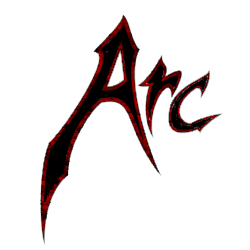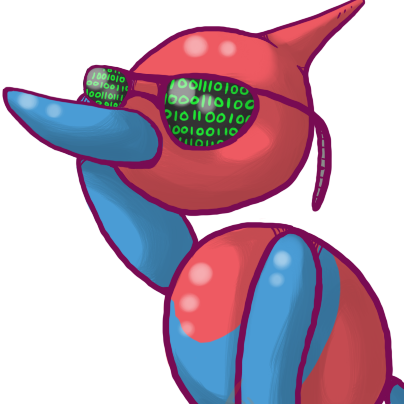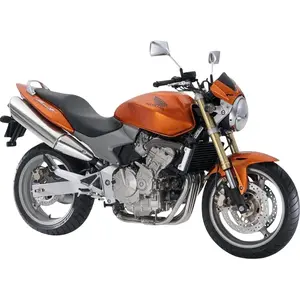I’m trying to plan a better backup solution for my home server. Right now I’m using Duplicati to back up my 3 external drives, but the backup is staying on-site and on the same kind of media as the original. So, what does your backup setup and workflow look like? Discs at a friend’s house? Cloud backup at a commercial provider? Magnetic tape in an underground bunker?
Sometimes: a laughing hyena.
If you don’t have tested backups, you don’t have a backup.
My one other media type is “the cloud”.
I use hard drives, I can’t imagine trying to put something on a disk or something.
One thing I do recommend, I keep one unencrypted hard drive copy in the safest most hidden part of my house. This is in case encryption software disappears, or I just forget my encryption keys or something.
Other than that, one encrypted copy of files in a thumb drive in my wallet (selected files, not everything). One in my car. One in my firesafe. Then daily cloud backup.
All storage is on a Ceph cluster with 2 or 3 disk/node replication. Files and databases are backed up using Velero and Barman to S3-compatible storage on the same cluster for versioning. Every night, those S3 buckets are synced and encrypted using rclone to a 10tb Hetzner Storage Box that keeps weekly snapshots.
Config files in my git repo:
https://codeberg.org/jlh/h5b/src/branch/main/argo/external_applications/velero-helm.yaml
https://codeberg.org/jlh/h5b/src/branch/main/argo/custom_applications/bitwarden/database.yaml
https://codeberg.org/jlh/h5b/src/branch/main/argo/custom_applications/backups
https://codeberg.org/jlh/h5b/src/branch/main/argo/custom_applications/rook-ceph
Bit more than 3 copies, but hdd storage is cheap. Majority of my storage is Jellyfin anyways, which doesn’t get backed up.
I’m working on setting up some small nvme nodes for the ceph cluster, which will allow me to move my nextcloud from hdd storage into its own S3 bucket with 4+2 erasure coding (aka raid 6). That will make it much faster and also its cut raw storage usage from 4x to 1.5x usable capacity
I use immich and nextcloud for the clients (my wife and my parents know that I only take care about that data) and on the server side I use borgmatic which has a local repository on the second drive inside my nuc and a remote repository hosted by hetzner called “storage box” which supports borg native.
Yes the remote is out of my physical access, but borg is fully encrypted and for 4$/3.6€/month for 1TB I feel good.
Before I started with borg and hetzner I had a rsync based backup with an odroid hc1 hosted by my parents, but that doesn’t feel safe. Due to slow network by my parents I had to sync my local backup instead of a second backup from the real data and the monitoring was also very bad.
From my point of view: You have no backup, if it is not automated and you have no monitoring.
I use Kopia to B2, then on a monthly basis I copy the current Kopia repo to an external drive that’s otherwise kept offline in my house.
All my video media that’s easier to replace than preserve is on my NAS running openmediavault with mergerfs. If I lose a drive I can always just, you know, torrent the tv show again.
My main PC (everything except the Steam game install directory) is backed up through KopiaUI to a folder on that mergerfs array that contains media that’s difficult/impossible to replace. Daily incremental backups.
That folder is mounted on my PC through DOKAN, which tells Windows OS that it’s a local resource (it does this more thoroughly than just assigning a drive letter to a NAS folder through Windows’ built-in system). The PC, including the “sensitive NAS media” folder, is then backed up to Backblaze’s personal backup service ($99/yr, unlimited size with one-year versioning). The DOKAN step is required for this, since Backblaze doesn’t support mounted NAS drives or non-Windows systems (presumably they don’t want to use space on versioned encrypted backups of hundred-terabyte pirate movie collections).
Oh, and my phone does one-way Syncthing to my PC, thus putting its files on the PC for Kopia and Backblaze to do their thing.
My main storage is a mirrored pair of HDD. Versioning is handled here.
It Syncthings an “important” folder to a local back up only 1 HDD.
The local Backup Syncthings to my parents house with 1 SSD.
My setup can be better, if I put the versioning on my local backup it’d free space on my main storage. I could migrate to a dedicated backup software, Borg maybe, over syncthing. But Syncthing I knew and understood when I was slapdashing this together. It’s a problem for future me.
I’ve been seriously considering an Elitedesk G4 or Dell/Lenovo equivalent as back up machines. Mirrored drives. Enough oomph to HA the things using the “important” files: immich paperless etc.
3: RAID-1 pair + manual periodic sync to an external HD, roughly monthly. Databases synced to cloud.
2: external HD is unplugged when not syncing
1: External HD is a rotating pair, swapped in a bank box, roughly quarterly. Bank box costs $45/year.
If the RAID crashes, I lose at most a month. If the house burns down, I lose at most 3 months. Ransomware, unless it’s really stealthy, I lose 3 months. If I had ongoing development projects, a month (or 3) would be a lot to lose, and I’d probably switch to weekly syncs and monthly swaps, but for what I actually do - media files, financial and smart-home data, 3 months would not be impossible to recreate.
All of this works because my system is small enough to fit on one HDD. A 3-2-1 system for tens of TB starts to look a lot like an enterprise system.
I use Backblaze B2 for one offsite backup in “the cloud” and have two local HDDs. Using restic with rclone as storage interface, the whole thing is pretty easy.
A cronjob makes daily backups to B2, and once per month I copy the most current snapshot from B2 to my two local HDDs.
I have one planned improvement: Since my server needs programmatic access to B2, malware on it could wipe both the server and B2, leaving me with the potentially one-month old local backups. Therefore I want to run a Raspberry Pi at my parents’ place that mirrors the B2 repository daily but is basically air-gapped from the server. Should the B2 repository be wiped, the Raspberry Pi would still retain its snapshots.
- User devices (main workstations, phone photos, etc)
- Local NAS (sync w/ #1, backup to #3)
- Cloud backup w/ commercial provider
A usb stick and an old hard drive from 2009. The crackhead way of dealing with backups.
My current plan once new migration is completed:
Primary pool - 1x ZFS (couldn’t afford redundancy but no different to my RPI server). My goal is to get a few more drives and set up a RAIDZ1/2.
Weekly backup of critical data (eg. nextcloud) from primary pool to a secondary pool. Goal here is to get a mirror but will only be one drive for now.
Weekly upload of secondary pool to hetzner storage box via rsync.
Current server
1x backup to secondary drive (rpi) 1x backup to hetzner storage box via rsync
My main server is backed up via Kopia to a 5 TB Hetzner Storage Box and to a second server at my parents in law‘s place. I‘ve got additional MDisc backups of old photos, Paperless PDFs and work related files that don‘t change at my mother‘s place as well.
My Linux ISO collection is too big to actually back up. So, I regularly create file lists and in the event of data loss, I will have to spend quite some time to rebuild it. At least, my fiber connection will help me with that.
DO NOT follow my lead, my backup solution is scuffed at best.
3:
I have:
- RAID1 array w/ 2 drives
- Photos on the device that took them
- Photos on a random old hard drive pulled from an ancient apple mac.
2:
I’ve got a hard drive and flash memory?
1:
Don’t have this at all, the closest is that my phone is off-site half of the day.
Real selfhosters know
My day-to-day stuff stays in sync via syncthing on my two laptops, my desktop and my home server. They all run btrfs, so I won’t be syncing any flipped bits around.
Home server rsyncs from my VPS once a week. When that’s fine, it rsyncs itself over to a hetzner storage over sshfs+gocryptfs.
Four copies at home, one in the cloud.






